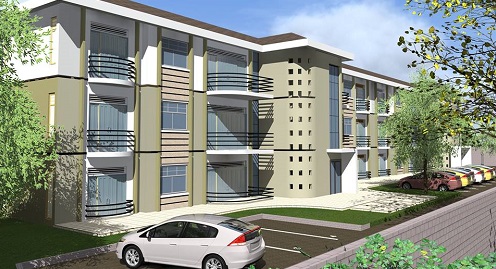COMMENT: By Joseph Were
Great corporation managers know one great thing; they know the difference between what their organisations do and why the organisations exist.
Some people know Steve Jobs only for what Apple, the company he founded, does. That it creates, produces, and sells amazing computer and electronic gadgets. But those who care know that Jobs did not set out to create just any gadgets. As he stated himself: “We started out to get a computer in the hands of everyday people”. That is the vision which transformed a company started on $1,350 in 1975 into a $200 million company in 1979 and earned it a stock value of $538 billion by February 2016.
Workers who save with the Fund need social security, not ostentatious projects that don’t reflect social responsibility
Speaking generally about why businesses exist, the renowned American corporate management guru, Prof. Peter Drucker, expressed exactly Steve Job’s vision but in a different way.
Drucker said: “Business enterprises … are organs of society. They do not exist for their own sake, but to fulfill a specific social purpose and to satisfy a specific need of a society, a community, or individuals.”
Drucker and Jobs views become poignant when you think about how Uganda’s national private sector provident fund, NSSF, is building houses that cost Shs650 million. Who is NSSF building these homes for? Certainly it’s not its primary customers; the NSSF savers. Simple mathematics shows why.
With about 1.7 million members who contribute about Shs800 billion annually, the average saving per NSSF member is about Shs530,000 per year or about Shs45,000 a month. That means the average NSSF saver earns Shs300,000 a month.
At that rate, an average NSSF saver would need to save all their monthly salary for 180 years in order to buy the house that NSSF is building.
The NSSF managers argue that, in fact, the target buyers are Ugandans in the diaspora and a few very rich foreigners and Ugandans at home. The managers claim that building and selling these houses enables the Fund to earn a profit which, in turn, enables the Fund to pay a higher return to its members.
Such views prompt questions about whether the great managers at NSSF know the difference between what NSSF does and why it exists. The NSSF vision is “to be the social security provider of choice”. The first question NSSF managers should ask is `social security provision for whom’?
According to its charter, NSSF pays a lump sum of their savings to members when they retire at 55 years. By its own statements, NSSF in 2015 paid out Shs230 billion to about 15,000 members. That is about Shs15 million per member on average. Question: Do NSSF managers believe that Shs15 million (Approx.US$4500) is social security for a 55-year old retiring member who needs to start a new life?
Drucker and Jobs views become poignant when you think about how Uganda’s national private sector provident fund, NSSF, is building houses that cost Shs650 million. Who is NSSF building these homes for? Certainly it’s not its primary customers; the NSSF savers. Simple mathematics shows why.

Perhaps it is time that NSSF looked at the financial positions of its members and designed products to match. There are many young people currently paying rent between Shs500,000 and Shs1 million per month. These can service a reasonable mortgage but the houses do not exist because NSSF has not financed their construction. It focuses on the rich.
NSSF managers should know that pension funds typically fill a gap left by commercial banks unwillingness to offer long-term financing (over 10 years). Housing projects undertaken by NSSF should fill this gap.
Nobody is proposing purely social benefit projects. But NSSF housing projects should not be driven by financial imperatives only either. NSSF has also previously spoken of enabling members to use their savings as collateral with banks. Good. But even without that, if affordable houses are available, members will buy them.
The longer term investment in affordable housing being proposed here has been shown to neatly match pension funds liabilities which are by nature long term.
The NSSF now has an asset base of Shs6.2 trillion (Approx. US$1.8 billion) and growing by over Shs2 billion per day. It is the government’s duty to ensure that some of this money provides housing for the working class. The pension fund’s current real estate investment strategy is socially repugnant, financially unviable, economically myopic, and politically not strategic. It creates social insecurity instead of social security.
Why should ordinary workers who contribute monthly see their money invested to build houses for the super-rich only?
The NSSF should also change its implementation approach. NSSF is a financial institution not a construction company. If it wants to acquire housing, it must buy not build. Otherwise Centenary Bank would have the biggest poultry farm in Uganda. Failure to note this is what has mired NSSF in uncompleted housing projects like Pension Towers, Temangalo, and Nsimbe housing projects whose cost has spiraled 200% over budget or unsold houses.
The Kenya NSSF (sometimes) uses a better model. It has bought houses from the National Housing Corporation as part of the Civil Servants Housing Scheme Fund (CSHSF); an initiative by the government to facilitate its employees to own houses. Since 2004, the CSHSF has facilitated 3,072 civil servants to acquire housing loans to either purchase or construct a residential house. This is how an integrated economy with vertical and horizontal sector linkages is created.
The Kenya NHC meanwhile builds houses for sale to Wananchi who pay 10% deposit and the balance is in form of a loan to tenant who pays it within 20 years through monthly remittance. This reduces corruption as people do not have to steal to own a house. It creates workers with an anchor. They are not looking to migrate at a minutes notice. It also means the workers do not have to “return to the village” when they retire. They just start a new life in their same old home.
The Tanzania NSSF has a similar project as NSSF Kenya in the Dege area of the capital, Dar es Salaam of 7000 modern but low cost housing units. It is being implemented with Ezimio Estate Housing Ltd. The low cost houses are sold to NSSF members. The Dege Eco Village project sits on 20,000 acres and the lower income houses cost between TShs 20 and 30 million. (Approx.UShs 30 and 45 million).
The pricing of the ongoing Mbuya NSSF houses is also strange; at the Shs14.5 billion invested for 40 units, the development cost of each unit is Shs363 million. So why price them at Shs650 million; a 100%mark-up? It is unrealistic. Or else not all information is on the deck.
***
Jwere@independent.co.ug
 The Independent Uganda: You get the Truth we Pay the Price
The Independent Uganda: You get the Truth we Pay the Price




Good analysis Joseph.
And then sometimes they go into sponsoring sports events…….
Joseph very thought-through article. Point is; NSSF should invest in the kind of housing estates affordable to most of its members.
Concrete has over the Ugandan years been the best way to bury stolen public funds. For NSSF to join the market, over heat with stolen public funds, is to deny its few savers a chance to real social security.
Current infrastructure projects like SGR, Power Interconnections are implementing a better model(on housing) for Project Affected Persons (PAPs).
Beautiful piece, Were. How on earth do you build a 650m mansion from my savings!!! NSSF needs an investment manager know understands the daily struggles of the savers at NSSF.
The problem in Uganda is lack of inclusity and having susustainable pro people development plans.
NSSF Uganda should be subjected to open competition, but you know what this would take?
Good article according to Ugandan standards!Won’t speak a lot about the Kenyan Institution.However please verify on the Tanzanian data!Am afraid the cost of housing portrayed in your article is not true!But that doesn’t discount the fact that the Ugandan Nssf counterparts are building at hyper inflationary costs compared to Tz for instance!
On a sad note however,For Uganda’s case; having one pension institution seems to be contributory to its hasty and non member inclusion in policy making!Tanzania has multiple pension institutions including Nssf.ppf,lapf,gepf,nhif to mention but a few!This makes them competitive in nature and so they try to offer competitive products to their members!Although this alone doesn’t stop the pension schemes from cheating their members!These bodies will always find ways of reaping from their members.In the name of housing projects and other large projects!We’ve had similar instances where land has been bought so expensively making the houses very expensive.This habit remains a blue print in our local institutions.We will always have such bad practices due to corrupt leaderships that are settling their self interests.Until the core purposes of existence of these institutions are achieved,the Nssf members would never gain from their membership!
I wanted to know the NSSF balance his nin is cm48100101z1kl